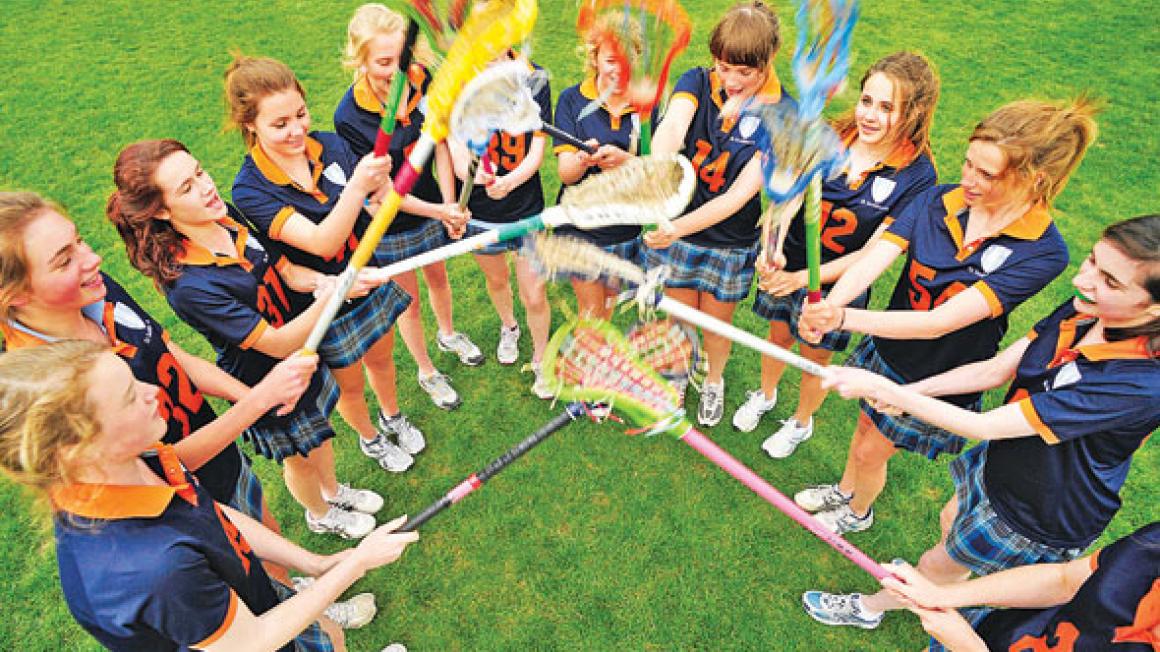Good sport
‘For many parents, the quality of the sports is a defining factor when choosing a school,’ says Janette Wallis, a senior editor at The Good Schools Guide.
Many different options, a longer school day and a generally more coherent approach, are reasons sport tends to be better in independent schools, suggests Ian Hunt, managing director of the educational consultancy Gabbitas. ‘These schools also attract a disproportionate number of former professionals as coaches, which means that their sports will have glamour for the pupils and be taken very seriously.’
Hunt believes that resistance to Kenneth Baker’s educational reforms in the 1980s adversely affected sports education in the maintained sector. ‘Teachers withdrew their goodwill and stopped taking sports out of school hours,’ he says. ‘In the independent sector, taking sport is part of every teacher’s job. And heads will appoint a good coach over a pure teacher if everything else is equal in their CVs.’
Thriving on competition
Sports teaching has become much more professional in the independent sector, claims Hunt, as, alongside professional coaches, schools are employing sports nutritionists and physios, and have magnificent modern facilities. ‘There is more emphasis now on inclusion, and sport has improved without jeopardising the star,’ says Janette Wallis.
‘Fifteen years ago, many prepschool children would never have had a chance to represent their school at a sport. Now most do – although sometimes parents may need to push the school a bit on this one.’
Rowan Edbrooke, headmistress of the all-girls day school St Helen and St Katharine in Abingdon, is a member of the Girls’ Schools Association (GSA) sports committee. ‘It’s a question of balancing participation with providing opportunities for pupils to take sports to the highest levels,’ she says.
The committee has been meeting with representatives of sports’ governing bodies to make them aware that across GSA member schools, ‘there is a captive audience of girls who thrive on competition and want to excel’.
Many GSA schools have outstanding sports departments, and the sports committee is looking at how elite performers are supported and planning to share that expertise across the membership as a whole.
Keep your eye on the ball
Even among independent schools, the playing fields are not level. So there are questions parents should ask about the quality of the sports education when considering a school for their child. First base is always to talk to current parents and pupils. Then start looking closely at what you’re being shown: eg, the fixtures list. How many teams are put out? How well do those teams do? It’s not an absolute clincher, but if the lower teams are routinely beaten, you may want to ask how many qualified sports teachers coach any other teams than the As and Bs. Are there extra fees for sports? And what kind of sporting trips are arranged?
Look, too, at the range of sports on offer, and how willing the school is to respond to children’s and parents’ suggestions. In many leading public schools, first-year boys are still given no choice but to play rugby in the winter and cricket in the summer, and girls hockey and tennis. ‘This can be very hard on pupils who have hated those sports in their prep schools,’ says Wallis. ‘It’s worth checking to see whether that first rugby year is imposed. Schools are making an effort – even a traditional rugby school like Wellington is now more flexible. That’s important because a child will be wasting hours playing a sport they hate when they should be developing other interests.’
Lesley Watson is chair of the Girls’ Schools Association sports committee and principal of Moira House, a girls’ boarding and day school in Eastbourne. ‘A lot of 14 year olds join as boarders,’ she says. ‘That’s oldish to take up sports, so we encourage lifestyle sports, such as trampolining, judo, squash or netball for fun. A number of our girls are county swimmers, but we also offer lessons for non-swimmers, lifeguard training and training for swimming teachers. It’s important to have a wide range of conventional sports.’
Lead by example
Jane Gandee is in her third year as headmistress of St Swithun’s, a girls’ boarding and day school in Winchester. ‘When I first started,’ she recalls, ‘there was a strong lacrosse tradition, but less emphasis on other sports. We’ve introduced a number of testers, including cheerleading, gymnastics, golf and cricket. We’ve recently played our first polo match, and we’re starting archery in the summer. What is most important is that girls have an exercise habit by the time they leave school.’
She has also reviewed the sports kit. ‘Teenage girls want kit that isn’t old-fashioned,’ she suggests. ‘It should also be warm enough, with proper-fitting base layers, so being outside is a pleasurable experience.’
Gandee admits that her boarders do get more sport, and there’s no doubt that a country boarding school, with long hours to fill and extensive playing fields, can provide a greater range of opportunities, even to weaker pupils. Nevertheless, there’s a surprising choice of sports in some city day schools, as the mixed preprep and preparatory Eaton Square School in London triumphantly proves. ‘Because we’re in the heart of London,’ says headmaster Sebastian Hepher, ‘we make an extra-special effort to give children as much sport as possible.’ He reels off a list of what’s on offer, which includes traditional sports, plus judo, karate, fencing, gymnastics and sailing in Docklands. ‘We have our own on-site staff,’ explains Hepher, ‘but we also hire in specialists for the relevant sports, to ensure top-notch provision.’
Schools need to lead by example, believes Gandee, an active sportswoman, who captained the Cambridge University women’s football team. ‘The PE staff at St Swithun’s are all very young and glamorous – and one has represented England in lacrosse. It’s good for the staff to be seen playing sport, which is a lifelong activity, not just something cruel we inflict on adolescent girls.’


